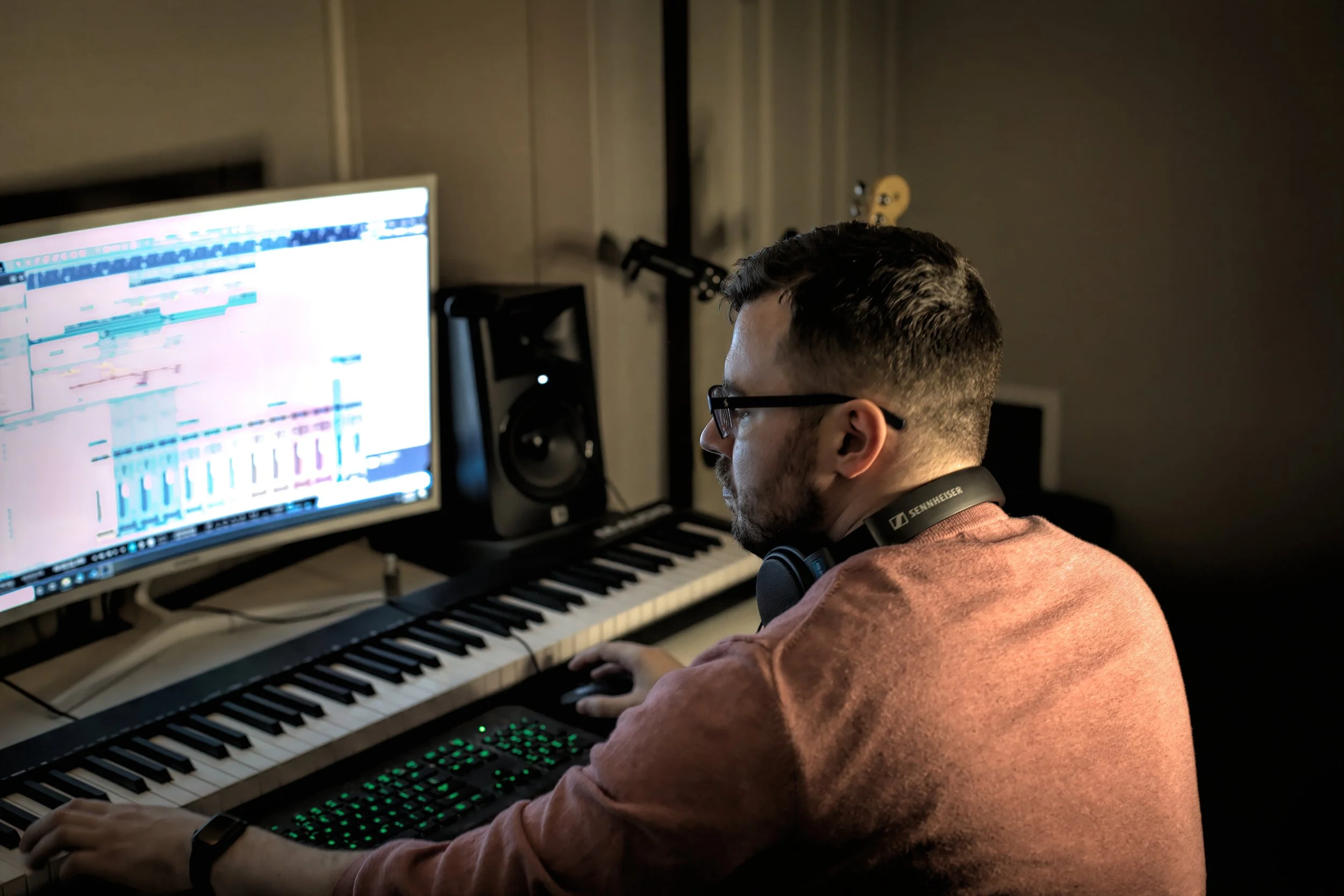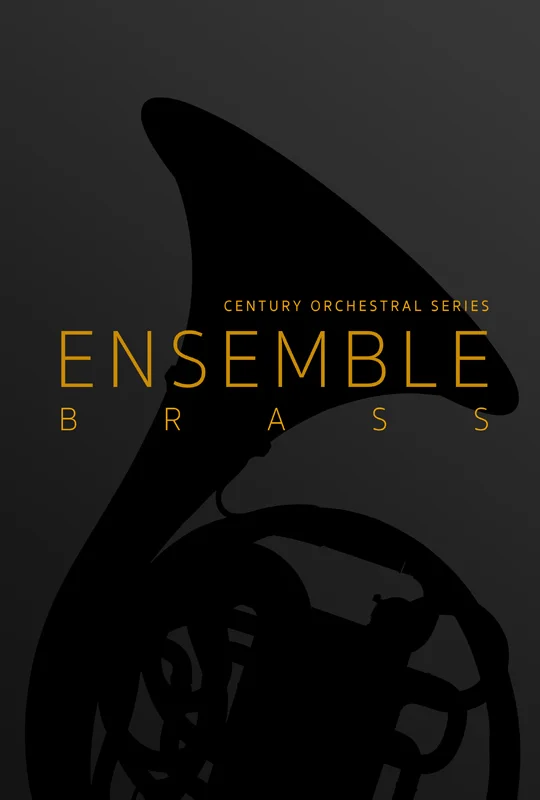Today we’re going dig into 8Dio’s Century Brass ensemble library and offer some honest opinions and thoughts about it. This full version Kontakt library was released at the end of last year, continuing their Century Series of orchestral instruments, which at that point only contained Century Harps (as of posting it now has Solo Brass, Strings, Sordino Strings, and Ostinato Strings as well).
I was very attracted to a hearty discount of 40%, which they offered last year during a store-wide sale, and I had been searching for Kontakt libraries to gradually replace East West’s Hollywood Orchestra series, as Kontakt consistently provided me with better performance and ease of use than the Play sampling engine which is used by East West. I was really impressed by the demos of their Century Series. It seemed to offer an incredibly detailed sound, with an astonishing level of realism, versatility, and playability. They provided free “Try-Packs” of some of the patches available as well, and I was very impressed with the realism of the legato scripting in the Try-Pack for the 6 Horn ensemble.
The GUI/Interface
The Century Series interface is simple and clean.
Century Brass is a library that does not register in Native Access, therefor you have to go to the file browser in Kontakt and load it up manually. I’m generally not a fan of this approach, and it honestly confuses me, as 8dio is a major player in this business and can easily afford the fee to Native Instruments to enable their libraries to be loaded up in the library panel.
Upon loading, however, I was fairly pleased with the simplicity of the interface (some might find it a bit bland), providing easy access to all the controls and mic positions. What really impressed me most is the way articulations and keyswitches are handled, allowing you to load up to TEN articulations in any order, and assign them to the keyswitch of your choosing. This seemed like a really nice way to sort of customize and tailor the library to the playing style of each user.
As for the articulations, there are an impressive amount here, including mutes, rips, crescendos, loure, flutter tongue, and one of the main selling points, according to their marketing, the Arcs.
Century Brass Ensemble offer’s a very large selection of articulations.
The Sound
When researching this library I was confused about this term “Arcs” being thrown around all the time, but it’s just an articulation featuring the players performing a dynamic swell, starting at the lowest dynamics possible and naturally rising up to full velocity, and then slowly tapering back down. To me, I just call them “swells” when I am describing them to someone else. They really are quite spectacular to play around with, and immediately I found myself using this articulation in every single track. It adds another level of realism, instead of just controlling dynamics with the mod wheel or CC automation, having these dynamic changes already taken care of in the actual performance really is something special to have in any composers arsenal.
The overall sounds of the instruments here are spectacular, captured in pristine detail and capable of performing in a truly impressive dynamic range. Everything is recorded centered, so you’ll have to manually pan to simulate a natural orchestral seating position. From the name of the library and the imagery of the marketing, it does feel they are catering this towards a more traditional composer, maybe even to classical and classic film styles, and the library really performs beautifully in the soft and mellow ranges. However I was also thoroughly impressed with the ability to really crank it all the way up to ff, and get an incredible amount of growl, heat, and a bold, majestic sound. This could easily be used as the only brass library to compose a modern epic or trailer track as well, I have no doubt about that.
The default mic position is a mixed mic, and it offers a lot of closeness and detail while maintaining the width and space of a further mic. I found the default mix to sometimes be a bit too close, however, especially for the horns. For the 6 Horns patch, which is spectacular, I found it really sounded best with only the Decca mic enabled. There was just something different about the default mix, which is not a bad thing, just not what my ears were used to.
The trombones give an amazing amount of growl in the higher dynamics, yet still warm in the softer dynamic ranges. I found the short trombone notes to be really fun to play with and wonderfully brassy, while the trumpets were bright and natural especially in the higher register.
A Few Quirks…
I did find there to be a lot of articulations that may not be necessary and some unusual choices as well, such as a “speed” knob to control the quickness of the legato transitions and how fast the arcs played. I found this really odd for the crescendos and arcs to be controlled by a knob with no numerical value, instead of syncing to the tempo of the DAW, and found it quite cumbersome to have to tweak the speed knob over and over until it matched the tempo of the track I was working on (not to mention re-adjusting for tempo changes, etc)..
While for the most part the legato patches sounded amazing when I first heard them, the more time I spent with the library, I did notice some annoyances (from minor to quite major) and bugs here and there. The legato transition volume sometimes seemed inconsistent, and adjusting the “Legato Volume” knob did absolutely nothing. It seems sometimes the legato transition volume is affected by the velocity at which you play the key, but sometimes I would be playing a very soft horn melody, yet each time I changed to a new note, the volume of the legato transitions was wildly inconsistent with the volume of the sustained notes I was playing. This honestly made some tracks unusable, as I would listen to them later through headphones and notice that the transitions sounded completely off and unnatural. There’s also an issue with the legato patch triggering the last note that was played instead of only playing the note I want it to play (it will play the wrong note for a split second before jumping back to the correct note), which again rendered this library unusable for a certain project I was working on. I also noticed some inconsistencies in timbre/volume across the full range of a single instrument (it was rare, but you can tell some notes have a different timbre, as if playing that note triggered a different mic mix as opposed to the one I had selected.)
I did email 8Dio support about these issues, and they responded saying they were aware of the issues and they would be fixed in an upcoming update, so I have no complaints about support as they got back to me immediately and said they are working on a solution. I also noticed Colin O’Malley of 8Dio has posted on a VI-Control forum back in March 2018 promising they are working on a free update for this library to offer new mixing options including pre-panned mixes, etc. I was a bit worried after I read users feeling that 8dio sometimes abandoned their libraries instead of releasing updates and fixes, but it seems if that was ever true, they are doing much more as a company to listen and stay engaged and offer updates to their customers.
The Verdict-
8.5/10
PROS+
+Amazing detail and realism in soft AND loud dynamics.
+Vast Amount of Articulations, including unique and highly playable arcs.
+Intuitive GUI with ability to customize key switches and load up to 10 articulations, all in one NKI file.
CONS-
-Some strange choices such as the speed knob, only one length of marcatos.
-A few bugs and inconsistencies really bring down the usability sometimes, especially with the otherwise incredible legato patches.
TL;DR: Century Brass is a very good library, but it’s note quite achieved greatness yet. The wealth of articulations and versatility, as well as the realism and detail captured in the recordings, are some of the highlights of Century Brass. These standout features are slightly marred by inconsistencies and bugs, but I have high hopes they will address these issues in the upcoming 2.0 update!
*(In the future I will update this review and possibly adjust the final score to included the 2.0 updates)



